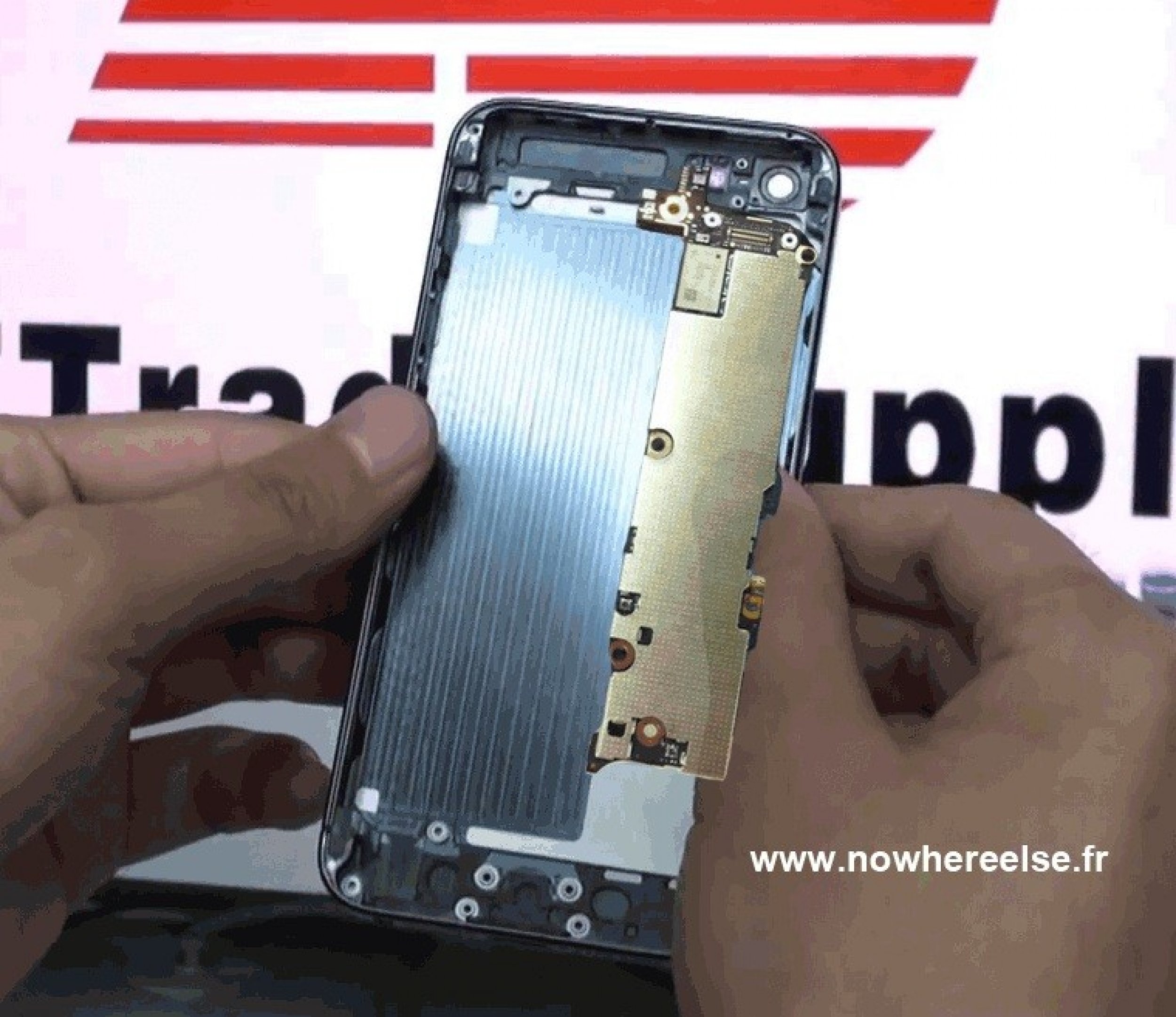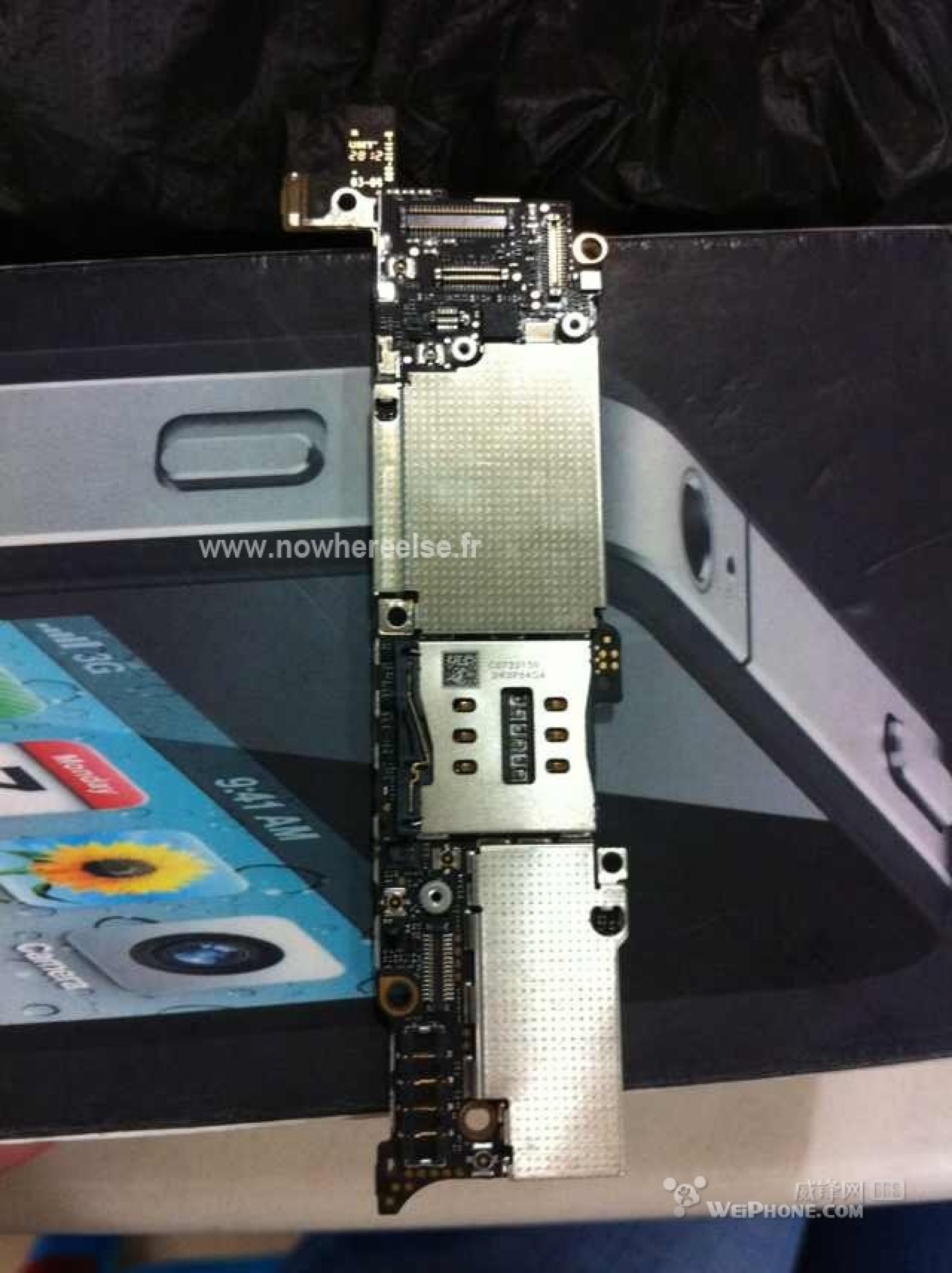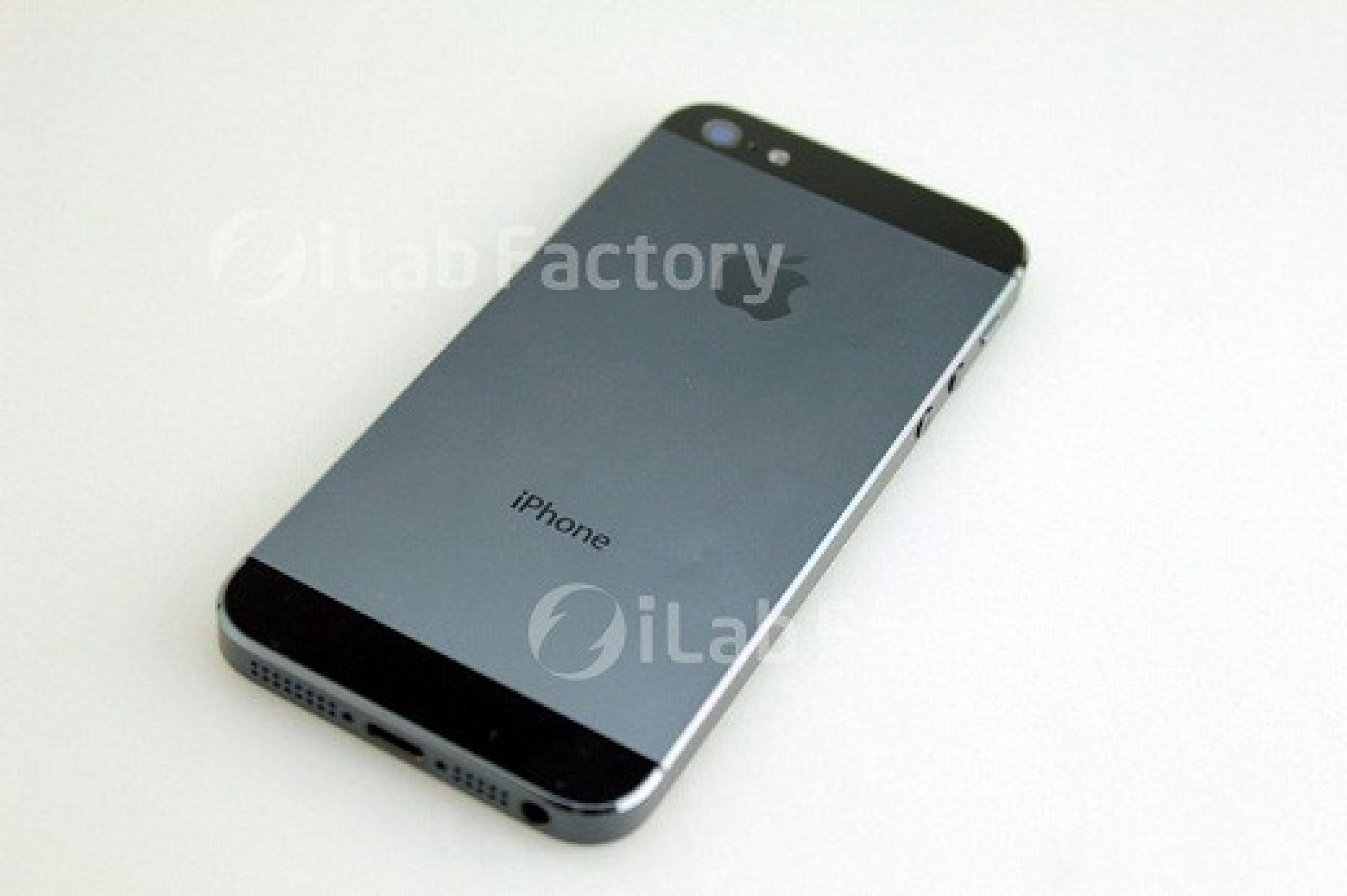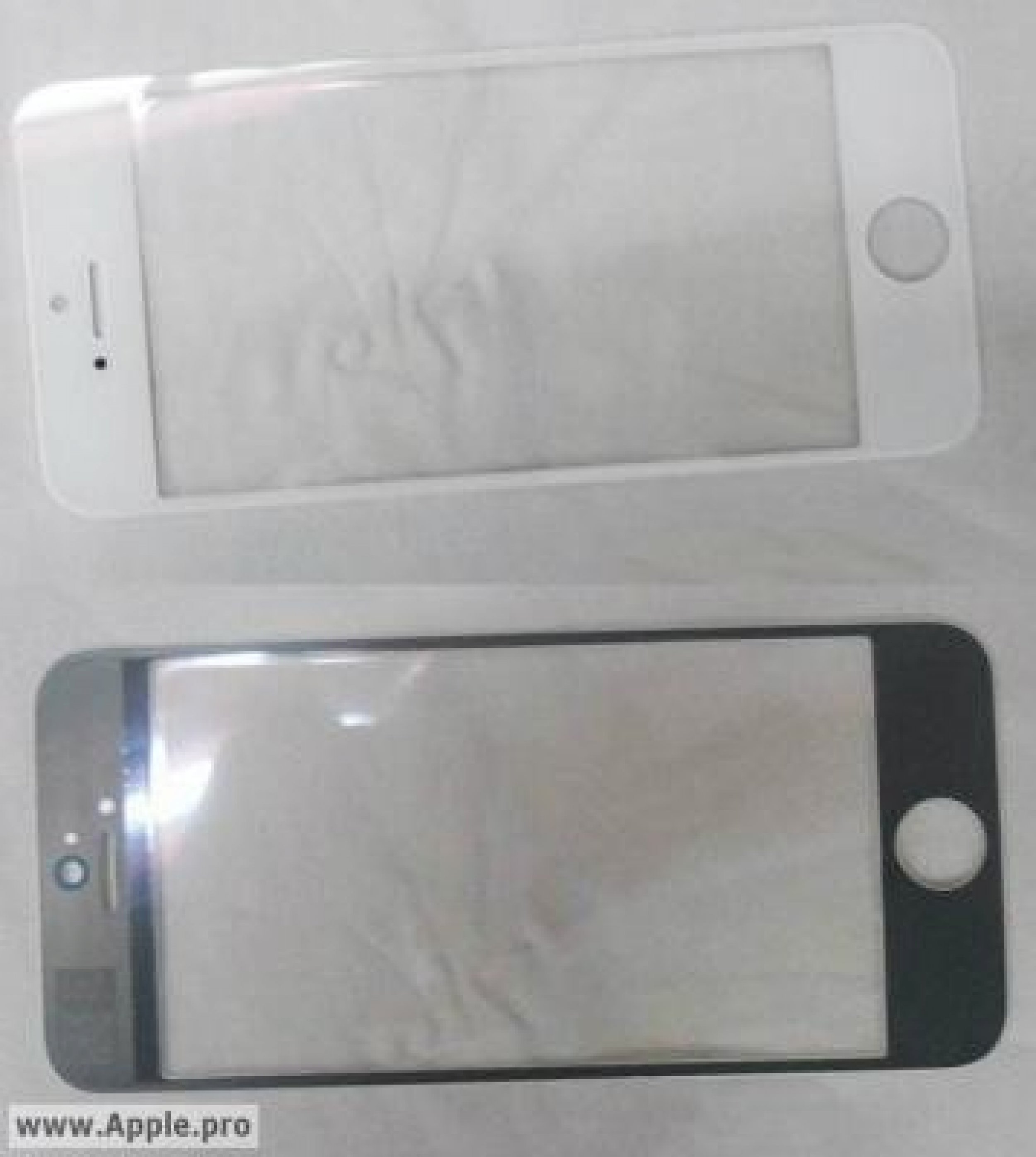Apple iPhone 5 Features: 'Leaked' Logic Board Perfectly Fits Previous Specs, Rumors, Components [PICTURES]
We're about a month away from the alleged date when Apple Inc. (Nasdaq: AAPL) is expected to debut the iPhone 5, the unofficial name for its sixth-generation smartphone, and fans are very excited to see what Apple's design wizards have come up with for this year's model.
Various sites have released photos and images of alleged iPhone 5 prototypes, and while many of them line up, iPhone component and repair experts had not yet been able to compare the phone's shells with any internal components. That changed on Monday, when French site NowhereElse posted a series of photos from Chinese forum Weiphone showing different angles of what appears to be the iPhone 5's new logic board.
There are several reasons to believe these "leaked photos" of the iPhone 5 logic board are legitimate. For one, the logic boards perfectly match the screw holes of the logic board lines within the previously-leaked shells, and NowhereElse even creates an animated GIF to show readers this perfect alignment.
"It would appear that after the shell, the façade, the drawer for the Nano-SIM smartcard, the new connector and many other parts presented as being designed to fit the iPhone 5, it's now the motherboard's turn to be unveiled before it's time," wrote Steve Hemmerstoffer, founder of NowhereElse. "As you will be able to realize through the small assembly I have created, the properly-positioned motherboard faces the exact five attachment points of the hull!"
Secondly, news about the iPhone 4S' logic board came around the same time last year, but even more importantly, they came from the exact same poster.
That's right: The same person who posted photos of the iPhone 4S logic boards on Weiphone's forum a year ago has purportedly returned to post photos of the logic boards within the new iPhone 5.
Unfortunately, the logic board posted on Weiphone did not include the one chip everyone is asking about - the CPU - but if more and more hardware components for the iPhone 5 keep popping up as they do, we'll likely get a chance to see what kind of processor will power the iPhone 5 before it's September release. The iPhone 4S and new iPad both run on an A5X dual-core processor, but it's possible Apple may have built a new chip for this phone, such as a quad-core A6 chip.
iPhone 5 Features: How The Logic Board Lines Up
Back in May, unofficial Apple website 9 to 5 Mac posted a series of photos showing new parts and components for the alleged iPhone 5. The designs, which had lined up with previous reports of the phone, featured faceplates and backplates for a new black and white iPhone, as well as a smaller dock connector, migrated components like the headphone jack and FaceTime camera, and a two-toned back with a metal plate.
The photos were sent to 9 to 5 Mac from the repair experts at iFixyouri, based in Florida. This is interesting to note, because as you'll soon discover, most photos and components are provided by anonymous sources within Apple's foreign supply chains in Asia. This was one of the few alleged prototypes actually provided from an American-based source.
We don't expect 9 to 5 Mac or iFixyouri to explain how it managed to obtain these iPhone components, but the photos do look legitimate, and they still line up perfectly with all previously rumored features and specs of the phone, as well as the reports of the phone that followed.
Months after iFixyouri released its iPhone 5 photo set in July, Gotta Be Mobile released "exclusive" photos of what it believed to be an engineering sample of the iPhone 5 design, which only helps to validate earlier rumors, reports, and even photos and schematics of the phone. Shawn Ingram of Gotta Be Mobile said that the engineering sample photos came from a "trusted source inside the Apple supply chain" in Asia.
Luckily for Gotta Be Mobile, more iPhone 5 evidence made its debut the same day it released its engineering sample photos: The Cydia Blog released what it said was a complete schematic of the new iPhone model, which matched perfectly with the front and rear plates acquired by 9 to 5 Mac. The schematics showed the same migrated camera and earphone jack from the photos, and they also described a bigger display; in other words, it confirmed that the prototypes were likely real.
For several months, Apple developers and fans alike have been able to look at the iPhone 5 casings and tear them apart; it looks like this is indeed what Apple plans to release next month, and all previous reports and images nicely align with these widely-accepted prototypes.
It's not very often that so many "leaked prototypes" would match up with each other, but it's entirely possible that Apple's mass production of a new phone has created several unintended leaks. But the fact is, the prototypes and images match the reports and rumors, and the other way around.
With the arrival of the alleged logic board, one would be initially skeptical of the photos' verisimilitude; however, upon inspection, the logic board's shielding matches almost perfectly with the inside of the alleged iPhone 5 mold, and the screws definitely match the new design. It could still be fake, but it would have taken a great deal of effort just to create a false report. If we can believe the previously-reported features based on the images, it's safe to believe that what you're looking at is the design of the new logic board.
iPhone 5 Features: What Else Can We Expect?
So if we can trust the reports that all align with each other, what will the iPhone look like? What will it feel like on the outside, or feature on the inside? Here's a rundown of what we know:
Bigger, Thinner Front Plate: On Aug. 3, ETrade Supply posted a highly-detailed image and video comparison between the iPhone 5 prototype and the iPhone 4S components, which just may be the most convincing photo evidence of the iPhone 5 we have to-date. The site shows the iPhone 5 and iPhone 4S face plates side by side. Whereas the iPhone 4S measures 76.65 mm long and 3.61 inches diagonally, the iPhone 5 stretches those dimensions: The front plate measures 90.25 mm long and 4.065 inches across. The iPhone 5's width is identical to all previous-generation iPhones at 51.6 mm, likely for comfort reasons, but that's not what makes it important: The width and the new height of the iPhone combined creates a resolution ratio of about 16:9, which will allow for 1080p HD videos, TV shows and movies to be played in a beautiful widescreen format.
ETrade Supply also took an unprecedented look at the differences in thinness between the iPhone 4S and the alleged iPhone 5 prototype. Whereas the iPhone 4S face plate measured exactly 1 mm, the iPhone 5's front plate is 0.1 mm thinner at just 0.9 mm thick. This thinness makes sense: Apple had allegedly been looking to adopt in-cell touch panels manufactured by Sharp and Toshiba Mobile Display.
Smaller Dock Connector: As predicted earlier by 9 to 5 Mac, Apple wants smaller dock connectors for its iPhones, and the newly released iPhone 5 models only confirm this. In addition, afterTechCrunch "independently verified" that the next iPhone will kick the standard 30-pin dock connector (a tradition since the third-generation iPod) for a newly designed 19-pin "mini" dock connector, Gotta Be Mobile released photos of the alleged "iPad Mini," which featured a similar 19-pin dock connector. Several other news sites, including The New York Times and Reuters, also believe Apple will implement the 19-pin dock into the iPhone 5, likely for the sake of making more space within the phone.
Redesigned Speaker Grills: The speakers on the bottom have been expanded and redesigned in the new iPhone model. Now that the dock connector from the iPhone 4 and 4S has been shrunk down, Apple has more room to create bigger and louder speakers.
Metal Back: The iPhone 4S features a back made of all glass, but the new photos from iFixyouri show black and white iPhones with much of the back encased in metal. It's not clear what function the metal back serves -- if it's simply a style choice, or if it's made out of an extremely-light "liquidmetal" solution -- but all of the photos of the new iPhones included these metal portions. There's a slight chance that the metal back could help improve call reception, given that the metal trim along the sides is molded into the metal backplates, giving it a "unibody" feel.
Migrated FaceTime Camera: To better mirror the faceplate of the iPod Touch, Apple has apparently moved the FaceTime camera from the left of the earpiece to above the earpiece itself. Moving the camera likely frees up more space to include more parts and components like LTE and NFC chips, but it also makes the iPhone more symmetrical and appealing.
Migrated Earphone Jack: Photos of the new iPhone show the earphone jack, which has traditionally been located on the top right corner of the phone, has migrated to the bottom left corner of the device. This design change aligns perfectly with a May 14 report from Hong Kong-based components supplier SW-Box, which claimed to have acquired a new headphone jack, ear speaker, and Wi-Fi cable part for a new iPhone. SW-Box's audio components would fit perfectly within the new design released by iFixyouri and 9 to 5 Mac.
New Camera Opening: Photos of the released iPhone show a subtle but interesting difference to the camera infrastructure: On the rear panels of the black and white iPhone models, there is now a small space between the camera lens and the LED flash. Looking at the inside of that space, there appears to be a tiny object that occupies the opening, which could be a small microphone to help with capture higher-quality audio when recording video.
iPhone 5: Likely Interior Features
LTE Connectivity: Despite the significantly higher download and upload speeds of LTE, previous implementations of the high-speed network in smartphones ravaged battery life, which was a major complaint from users. If Apple wanted LTE in the iPhone 4S, it would have been forced to increase the phone's thickness to accommodate a larger circuit board and a bigger battery. As Apple CEO Tim Cook noted in a company earnings conference call in April 2011, "first-generation LTE chipsets force a lot of design compromises."
But now, with new LTE chips from Qualcomm now available, it's a foregone conclusion that Apple will implement radio bands for 4G LTE in the iPhone '5', given that Apple introduced the high-speed network on its new iPad, released March 16. Since LTE in tablets isn't a feature users were breaking down doors for, its implementation was likely done as a "practice run."
In-Cell Touch Panels: It's been said that Apple wants in-cell touch panels for the iPhone 5, which are multi-touch panels that experts say far outperform current "on-cell" touch screens. In addition, in-cell touch technology creates significantly thinner displays than their on-cell counterparts since their creation involves removing a layer between the multi-touch screen and the LCD display. Not only are the touch sensors vastly improved, but they're actually more powerful in resisting scratches on the touch panel, resulting in "a longer product lifetime." AUO Optronics, based in Taiwan, explains the difference:
"In contrast to the traditional resistive and digitizer touch controls, since a mere light touch can be picked up, the operation interface of In-cell charging sensing is more humanized," AUO said. "In addition, charging sensing not only can support multiple point touch control, but further support pen writing at present to meet different requirements by the clients."
NFC: Near-field communication is nothing new. In fact, many current smartphones have the chip built-in so owners can use mobile payments solutions such as Google Pay. Apple has held off on implementing NFC technology into its iPhone, but a slew of recently granted patents seem to suggest that will change with the sixth-generation model. Two of the major features said to use NFC rather heavily are the iWallet, andiTunes "Gifting."
The iWallet: If you saw Apple announce iOS 6 at WWDC, you may have heard about a new application called Passbook, which is designed to keep all of your gift cards, coupons and tickets all in one place. With a simple flick, users can summon their Starbucks cards, loyalty cards, train tickets, plane tickets and sporting event tickets, too. While Passbook will work on every iOS device, Apple has reportedly been building an expansion of this software specifically for an NFC-capable iPhone.
Apple won a major patent on March 6 for a piece of technology called the "iWallet," which is a digital system that gives users complete control over their subsidiary financial accounts on their iPhones, and also leverages Near-Field Communication technology to complete credit card transactions directly on the phone as well. The iWallet has many different features, including giving users the ability to see their entire credit card profiles, view statements and messages from their banks, and even set parental controls for their children, should they also want to use their iPhones as digital wallets. Outside of the iPhone, users can keep track of their payments and statements within the iTunes billing system, which keeps credit card information and records safe and secure. There's a possibility that iWallet could also work with other Apple utilities, which could allow users to buy things like movie tickets directly within the apps, but only time will tell with that one.
iTunes Gifting: Speaking of NFC ... Another Apple patent unveiled in April described a system for standardized buying, sending, and receiving of media files from a media provider (iTunes) between multiple devices (iPhones, iPads, and iPodTouchs). The process was simply called, "Gifting," and it would certainly work with an NFC-capable iPhone.
Downloading and storing digital media with online service providers has become commonplace -- more so than purchasing DVDs and CDs at physical stores -- but it's not very easy to transfer digital files from one individual to another, usually because of copyright laws. Apple believes "Gifting" is the solution.
One method for gifting requires the sender to authorize a gift charge to their iTunes account, which is then transmitted from the sender's device to the receiver's device -- via tapping, or as long as they're nearby -- thanks to the NFC chip. If the recipient of the gift isn't nearby -- or you want it to be a surprise -- the gift-giver may submit an official request with iTunes, which then processes the request and charges the initiator's account for the given file. The patent also allows for multiple gifts to be sent in a single transaction, as well as certain customization options for the gifts -- including voice greetings and custom gift images, likely to conceal the gift's identity before the recipient opens it.
Advanced Haptics: Another recently published Apple patent describes a new haptics feedback system that allows a user to interact with the content on the screen by touching it, which is accomplished with sensors and actuators working simultaneously. The new multi-tiered system is extremely sophisticated: Using several layers of elastic screens stacked on top of each other, Apple's screen can produce 3D buttons or objects to interact with, as well as give texture to images, like topographical maps.
Apple's haptic system can create different types of actions, including vibration, net displacement, bending, deforming, or any combination of those elements. The technology can also work with a secondary display screen or audio system, which would be useful if Apple ever builds its iTV, but the system can also be applied to flexible organic light emitting diode, or OLED, screens. This advanced haptics system would also work with almost every portable Apple device, including iPhones, iPod Touch devices, iPads, MacBooks, and even TVs, video projectors and e-Ink displays.
OLED Display: Apple is reportedly testing the iPhone 5 prototype with an A5X chip, which is the quad-core graphics processor used to power the Retina Display in the new iPad. But why would Apple need such a powerful chip for an iPhone? Given that the A5X chip is a graphics powerhouse, if Apple doesn't drastically change the physical size of the screen to 4.6 inches, it may be changing the display's overall quality.
Apple has plenty of money to afford OLED screens in an iPhone-size display, and it would make sense for Apple to ask Samsung to help build its iPhone 5 displays. Samsung knows how to build big, beautiful screens for any size device: Just imagine what Samsung could do with Apple's Retina technology implemented into an OLED. Apple would effectively put distance between the iPhone and all other smartphone competitors for another five years, at the very least.
Audio Sharing Network: The last few months have seen Apple pay increasing attention to its audio network. It released its Podcast application as a completely separate application, and now, according to a newly-filed patent for the iPhone, Apple plans to make the iPhone into a "conference telephone" designed to cut out the background noise while recording audio, which can then be packaged and distributed. This feature would certainly appeal to students that want to record their lectures, as well as enterprise professionals that want to hold and record teleconferences with multiple individuals and be able to hear everyone clearly.
Crack-Proof Glass: Everyone who's ever had a rough Saturday night would certainly love this patent.Granted on Nov. 15, Apple's patent for crack-resistant glass uses the same alumino silicate glass solution used in the iPhone 4 and 4S, but chemically treats it with potassium and sodium ions to achieve greater compression thresholds on the surface and edges of the glass, making it less susceptible to cracks.
Apple also included a handy feature that will appeal to everyone who's ever dropped their iPhone: The patent calls for a shock mount to be placed between the glass and the body of the device, which will instantly inflate if the device senses it's falling. If the iPhone's internal accelerometer senses it's falling, an actuator within the device sucks in the cover glass as it accelerates to the ground, protecting it from damage.
Apple Avatars. If you want to buy movies, apps, or any content through Apple's iTunes Store or App Store, Apple requires you have an Apple ID. Your Apple ID sticks with you in the company's Game Center, which keeps track of a user's achievements across purchased and downloaded games. But if this recently granted patent has any bearing on the immediate future, Apple users may soon get to make customizable Apple Avatars, which users would use to represent themselves within potential online or gaming environments. Apple users could create a 3D model of themselves, customizing features like hair, eyes, nose, and eyebrows, as well as other features and accessories. While avatars seem to be geared towards kids, it would actually help give users a source of identity while making the Apple brand -- and identification procedures -- a little more fun. Don't be surprised if Apple had Pixar's help on this one: Just look at the eyes.
Micro SIM Connector: It's definitely not the sexiest feature, but if Apple decides to include this patented micro SIM connector in the iPhone 5, you won't be unhappy. Apple usually doesn't like people tinkering inside its devices, but the company's micro SIM solution is described as "easily removed and replaced," as well as "resistant to damage by an improper insertion of a SIM card, and may provide reliable mechanical performance."
The Photographer's Timer. Traditionally, self-timing cameras are used to take pictures of a big group, or a self-portrait. But in Apple's self-timer, a patent granted March 8, the iDevice's camera can identify the photographer and ask if they want to be in the picture. At that point, the iPhone will simply wait until it detects the photographer's face in the viewfinder before it automatically snaps a photo. If you are the "photographer" who also wants to be in the picture, the iPhone will simply wait until it detects your face to take the picture.
"But what about interruptions? What happens if I get a call after I set the self-timer?" Wonder no more. If you set the timer and then your phone goes off, the timer will still wait until it has detected, recognized and verified that you are the photographer and that you're in place for the photo. Now if only Apple patented a tripod...
3D Photography. While existing 3D cameras and video recorders can gather three-dimensional information from objects, they're generally incapable of getting detailed enough information in relation to the shapes, surfaces and depth of the objects. Apple's solution involves a series of systems, tools and methods to capture a 3D image by using multiple sensors and cameras. One sensor would capture a polarizing image, while two other sensors would capture two different non-polarizing images, and Apple's system would combine the images into a composite.
3D Object Recognition. On May 10, the U.S. Patent and Trademark Office published a series of Apple patents relating to 3D face and object recognition technology. Apple's system involves taking a picture -- either with a front or rear camera -- and the 3D recognition software would distinguish between the two-dimensional projection of the image and the three-dimensional shape of the objects in the image. The process would be fully automatic, which would help for identifying faces in a group of objects, or even identifying objects in X-ray images.
Multiplayer Gaming. The iPhone 5 might also be the first phone to feature a new piece of software for multiplayer gaming. On March 15, the U.S. Patent and Trademark Office published a patent application from Apple that describes a system for multiplayer gaming, which allows groups of people to play the same game together and even see it from different perspectives according to the devices' physical relation to one another. The system actually mimics that of the "Find My Friends" app, in which a user's device detects other nearby devices that it recognizes as "friends," and invites them all to join a common application. The technology also determines the relative position of those devices, so some games -- like turn-based role-playing games or card games -- can be played in a specific order.
iPhone 5: Your Thoughts
What do you think of the photos of the alleged iPhone 5 logic board? Do you think this is what we'll see from Apple at next month's event? Would you be disappointed if this were the case? Shoot us an email or sound off in the comments section below.









© Copyright IBTimes 2024. All rights reserved.












